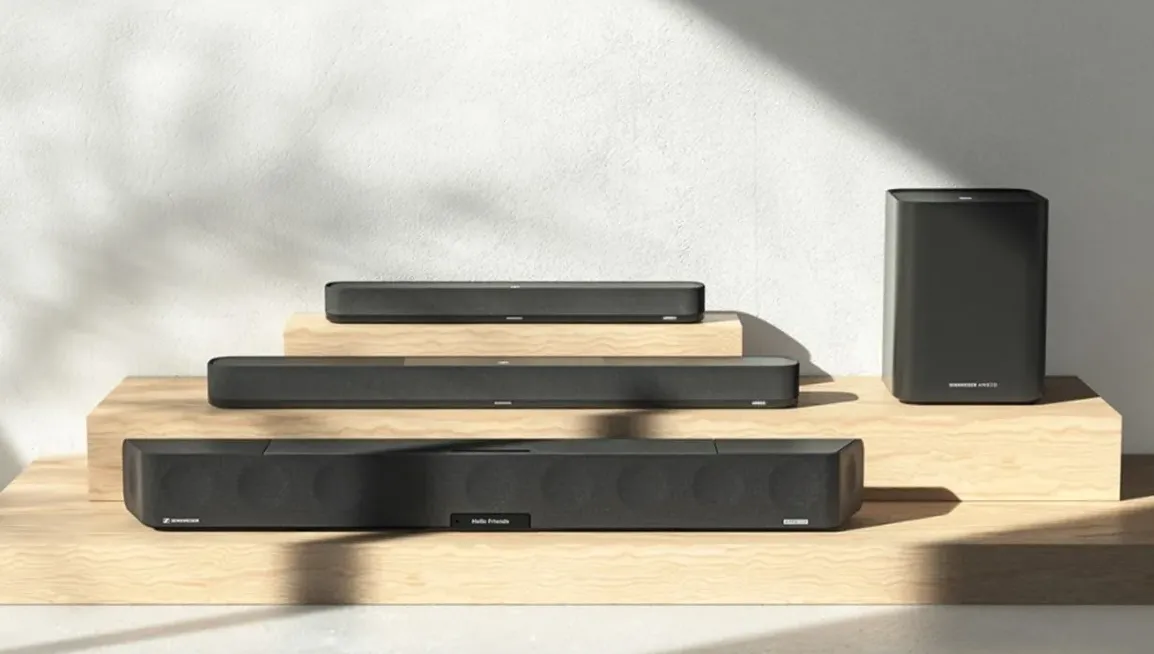Sennheiser’s Ambeo Soundbar Mini Offers 3D Audio in a Compact Package
Sennheiser introduced the original Ambeo Soundbar in 2019 as their sole living room speaker with immersive audio technology, but it came with a hefty price tag of $2,500. Now known as the Ambeo Soundbar Max, it still costs $2,000 and offers impressive sound in a large package. Last year, Sennheiser released the Ambeo Soundbar Plus, a smaller and more affordable option priced at $1,500 (now $1,200). Today, they announced their most budget-friendly model yet, the Ambeo Soundbar Mini, which delivers immersive audio in a smaller speaker. However, it still comes with a relatively high price of $800 as it competes with the Sonos Beam.
According to Sennheiser, the Ambeo Soundbar Mini is less than half the size of the Ambeo Soundbar Plus. The smaller height reduces potential obstructions when you place it in front of the TV, and the company says it’s compact enough to fit on your desk. Despite the smaller footprint, the Mini still packs 250 watts of amplification power behind four full-range drivers and two four-inch subwoofers. According to Sennheiser, these components combine to achieve the “crisp definition, impressive bass and crystal-clear presence” of the two larger Ambeo soundbars.
The main attraction here is still the company’s immersive Ambeo technology. Sennheiser’s 3D sound system uses the Mini’s four microphones to calibrate the soundbar to any room. This process takes into account room size, reflective surfaces and textures. A one-touch process adjusts the speaker’s 7.1.4 surround virtualization for best performance. The Mini supports Dolby Atmos, DTS:X MPEG-H and Sony’s 360 Reality Audio when connected to a TV or monitor via a single HDMI 2.1 (eARC) port. According to Sennheiser, the soundbar can produce “room-filling sound and impressive bass” down to 43Hz, but it also lets you connect up to four Ambeo Subs ($600 each).
The Ambeo Soundbar Mini is equipped with WiFi and Bluetooth, both of which can be used to stream music from Amazon Music, Apple Music, Spotify and Tidal. According to Sennheiser, the speaker’s Ambeo operating system enables quick access to sound via Chromecast, AirPlay 2, Spotify Connect and Tidal Connect. The Mini’s microphones can also be used for voice commands through built-in Alexa compatibility, but using Google Assistant or Siri requires Chomecast or AirPlay.

If you want to expand your Ambeo lineup beyond the Mini, your only option is to add an Ambeo Sub. The soundbar does not support third-party subwoofers and is not compatible with wireless satellite rear speakers. This is due to the lack of Ambeo integration on both (Sennheiser really needs to make a set of rear speakers ASAP). Besides the lower price, this is the key difference between the Mini and the Sonos Beam. Sonos’ second-generation compact soundbar adds Dolby Atmos, but lacks fast controls, so the overall impression is limited. However, a package that includes the Beam, Sub Mini, and two Era 100 speakers is available for $1,356 — about $50 less than the Ambeo Soundbar Mini and its matching sublicator.
The Ambeo Soundbar Mini will be available on September 1st.




